As one of the four homes of the world earliest civilizations, China is a huge country with a long history. She boasts a territory about the size of Europe and a population about a quarter of that of the world. Through a recorded history of nearly 4,000 years, China has nurtured her splendid history and colorful culture. Her fertile land is inhabited by 56 nationalities, which have kept their own folk customs and traditions. The landscape varies from the coastal region to the roof of the world.
China’s Geographical Features
Situated in Eastern Asia, China is embraced by the West Pacific Ocean. It covers an area of 9.6 million square kilometers(371 sq.mi). The landscape varies from east to west. Featured by its hilly land and vast plains, the east part of China Mainland is a coastal region. The altitude goes up from the east to the west. The west part of the mainland is a mountainous region or high land. There are four high plateaus in China Mainland. The Qinghai-Tibet High Plateau is the highest one. The Everest, the summit of Himalaya Mountain is 8,848 meters(29028.8 feet) above sea level. It is the highest in the world. Both the Yellow River and the Yangtze River rise on the Qinghai-Tibet High Plateau. Both are the cradles of the Ancient Chinese Civilization. The Yangtze River is the third longest one in the world, is about 6,300 kilometers(3,914 miles) in total length. The Yangtze River Cruise Tour attracts a large number of foreign tourists with its gorgeous landscape. Sichuan Province, is the home town of Giant Panda, is a paradise for both photographers and hill walkers.
Population and Nationalities
China boasts a huge population of about 1.4 billion. There are 56 nationalities in China. The majority is Han which occupies 91.51 percent of the population. The second largest group is Zhuang Nationality, of which the population is 16.9 million in total. Guilin is just the place where Zhuang people reside. The total population of Tibetans is about 6.3 million. Tibetans live in Tibet, Qinghai Province, the west part of Sichuan Province, the south part of Gansu Province and the northwest part of Yunnan Province. All of the ethnic groups have kept their own traditions and folk customs.
The Climate Feature in China
China’s climate evidently varies from bitter coldness in winter to unbearable heat in summer. It also differs clearly from the coastal region to the high plateaus. Yangtze River is officially considered as China’s geographical dividing line between south and north. Influenced by both Siberian Cold Current and Southeast Pacific Ocean Monsoon, China has a climate feature that people can easily tell the clear temperature difference between winter and summer. It is hard to find a city in China which has an ideal climate feature all year around. On one hand, some cities in the south and south west, like Chengdu, Kunming and Guangzhou, are relatively warm in winter; and on the other hand, some cities are relatively cool in summer, like Harbin in the far northeast and Lhasa on Qinghai-Tibet High Plateau.
In Northern China, winter lasts from December to March. It can be extremely cold. For instance, it is windy and snowy in Beijing, and the temperature descends to minus 20℃(minus 4 °F). In summer, from May to August, it is rainy and hot, and the temperature rises to 36℃(96.8°F). Spring and autumn are the best seasons to visit Northern China.
In Southern China, the season of typhoons begins in July and ends in September in summer. The temperature exceeds 38℃(100.4°F). The winter in the Southern China is short and relatively warm between January and March. Most of visitors plan their tours to the south part of China in spring and autumn.
In Southwestern China, the subtropical climate and a big difference of elevation create diverse fabulous natural scenery and exotic wild beauty. Its climate feature is mainly dominated by both the Southeast Pacific Ocean Monsoon and the Southwest Indian Ocean Monsoon. In the lowlands, it is quite humid, mild and hot in summer which comes in the early June and goes in the late August. Winter is also short and warmer than that of Northern China. The temperature ranges from 36℃(96.8℉) in summer to minus 2℃(28.4℉) in winter. In the highlands, it is quite cool in the summer, and extremely cold in the winter. The flood season is between July and August. Visitors should try to avoid their tours to the mountainous areas in both the rainy season and winter. Sometimes, the roads are blocked by both landslide in rainy season, and heavy snow in winter. The most ideal time to travel to Southwestern China is between September and November, or between March and June.
In Northwestern China, it is always sunny, but hot and dry in summer. Particularly, in the desert regions, it is scorching in the daytime. Turphan, for example, lies in a depression 150 meters(492 feet) below sea level and is well-known as the hottest place in China. The temperature in Turphan might reach the maximum value at 47℃(116.6°F) in summer. When the winter arrives, the region where the Ancient Silk Road lies is as severely cold as the rest of Northern China.
Undoubtedly, Tibet is one of the harshest places for human existence in the world. It is cool in summer, but exceedingly cold in winter. The capital city, Lhasa is the mildest in Tibet. Its temperature may ascend to 28℃(82.4°F) in summer, but plummet to minus 15℃(5°F) in winter. The sun is blazing hot in the daytime in Lhasa. That is the reason why Lhasa is nicknamed as the City of Sunshine. On the high plateau, the sun radiation is terribly strong and harmful, but the air is too thin to block off or retain heat. It leads to the temperature extremes which occur respectfully in the daytime and the nighttime during twenty-four hours. The winter in Tibet usually lasts from December to March. The best time to visit Lhasa is between April and October. The north part of Tibet is always freezing chill in winter which starts in October and ends in the following May or June. The peak season of tourism in the east part of Tibet is between May and June, as well as September. In the south part of Tibet, it is balmy during the period between May and October. Hence the best time suggested for you to visit Lhasa, Shigatse and Nyingchi is between May and October.
China’s Tourism
China is a large country with a long history. That is the reason why China is rich in sightseeing resources. Her vast territory provides us a variety of landscapes and unparalleled beauty of nature. Her splendid history affords us many historical sites and cultural relics. Giant Pandas, the Great Wall, and the Terracotta Warriors are known as the top three wonders of China’s tourism. In fact, there are many beautiful places to visit in China. Some of the most attractive destinations are listed below.
| 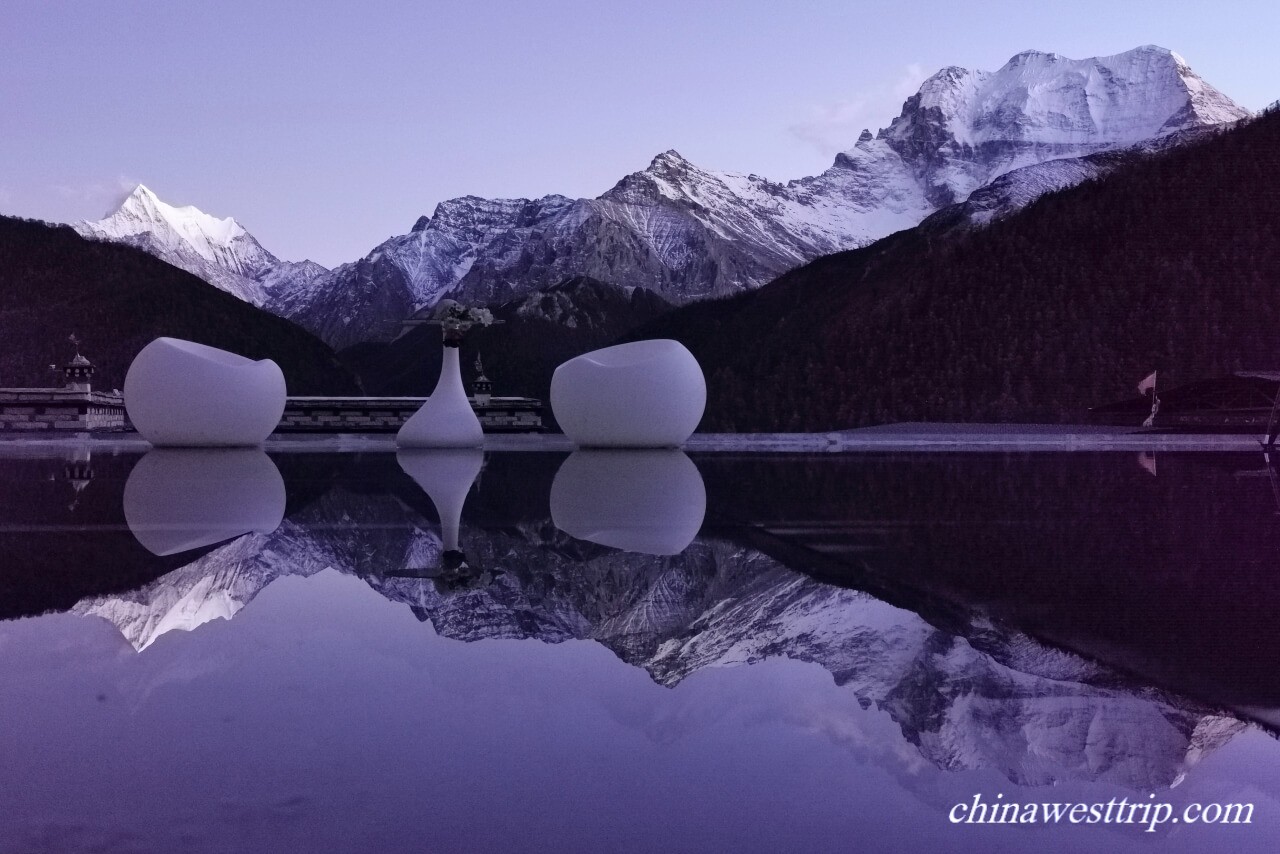 Daocheng Yading Daocheng Yading |  Tibet Tibet | 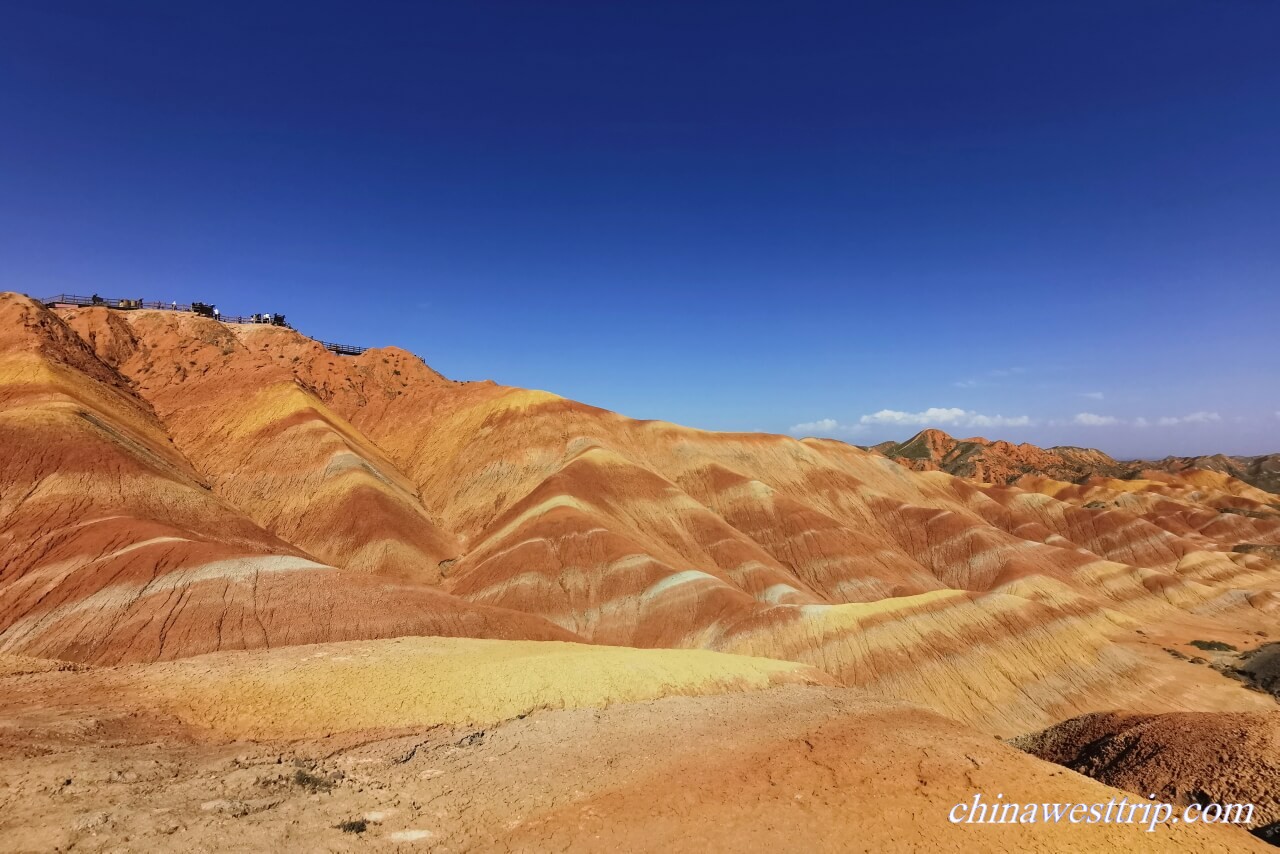 The Silk Road The Silk Road |
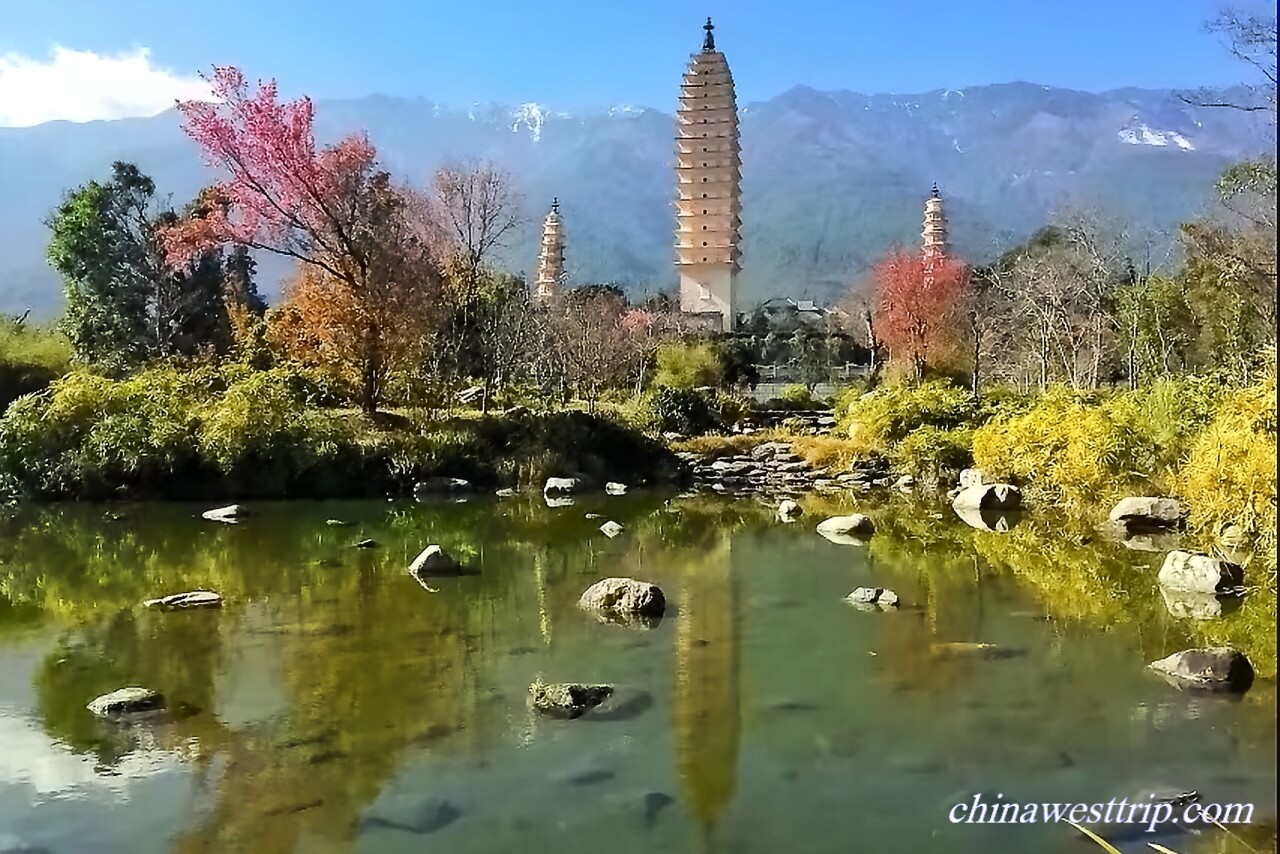 Yunnan Yunnan | 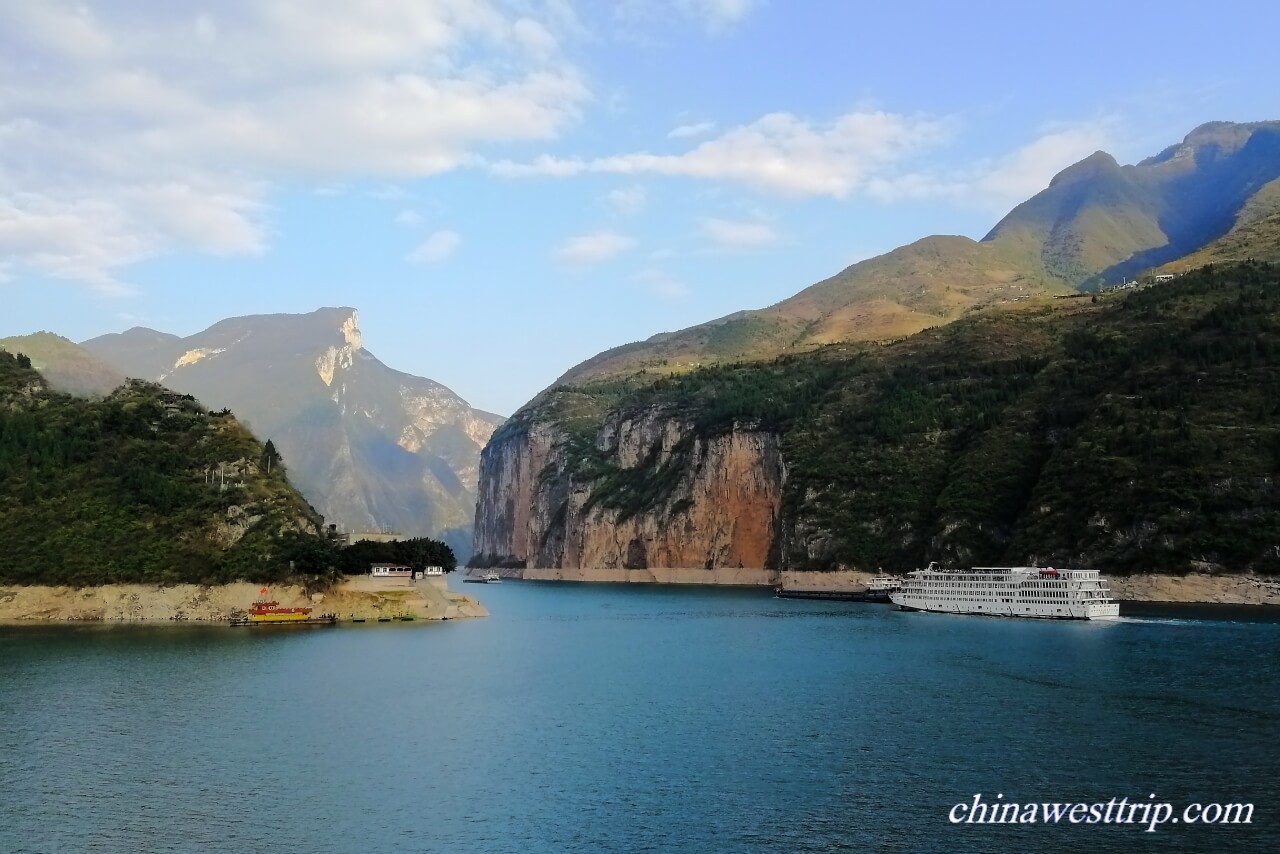 The Three Gorges The Three Gorges | 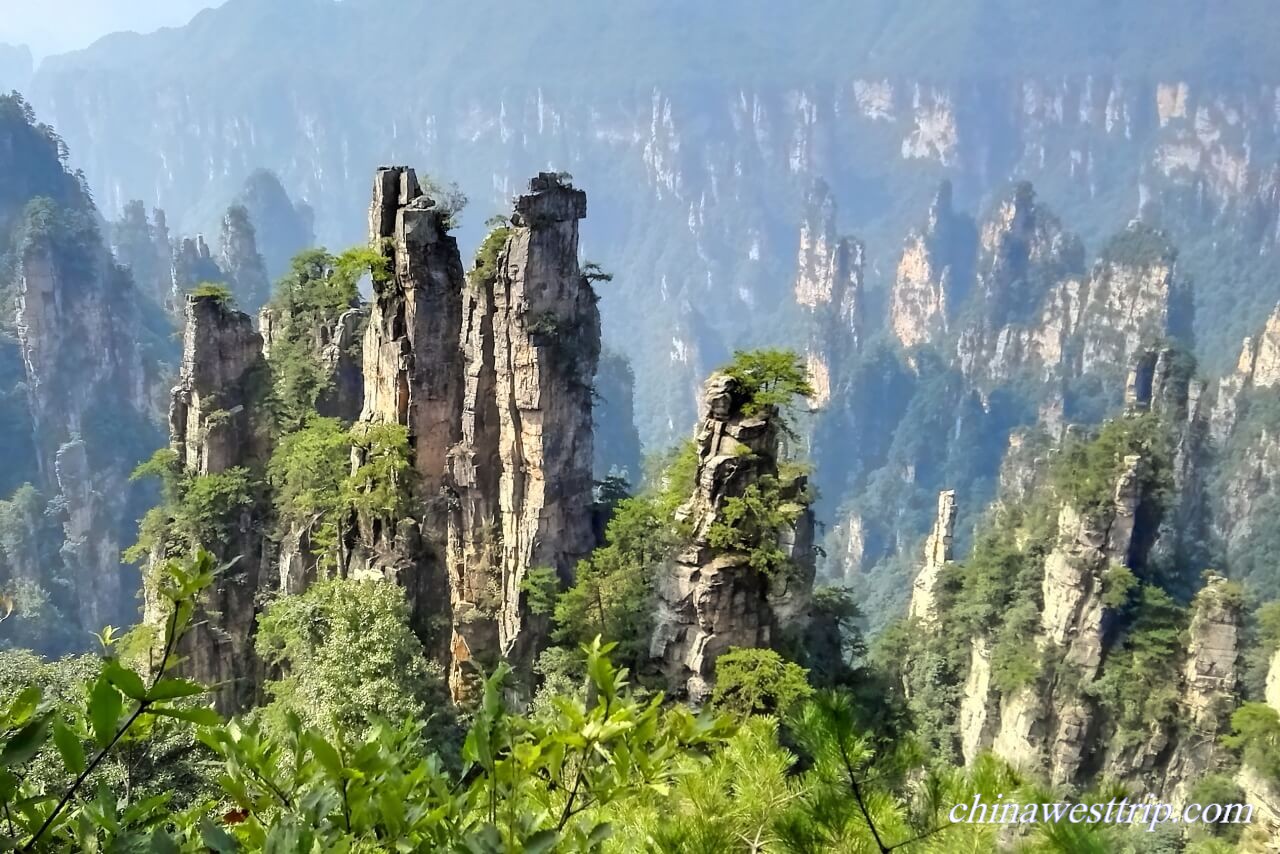 Zhangjiajie Zhangjiajie |  Guilin Guilin |
Travel Tips
China Visa
All visitors require a visa who plan to travel to China Mainland whether they travel for business or vacation. His passport must be valid for at least 6 months after the duration of his intended stay. Visas are issued by the embassies of China or the consulates overseas. The possibility to obtain a China visa at the border entry points of China is quite low. The single-entry visa is usually valid for three months after the issue date. It is a permit to allow travelers to stay in China for a maximum of 30 days. They are allowed to travel as tourists or conduct general business activities with the single-entry visa. In fact, most people need to apply only a single-entry visa. The “double-entry” or “multiple-entry” visas are required for those who need to leave and re-enter China Mainland. Visa is not required for transit passengers who hold tickets and have booked seats on international airliners flying on route to a third country or region within 24 hours. The number of 72-hour visa-free cities for transit passengers from 53 countries has increased to 23 in China. The 23 cities and 53 countries are listed below.
Safety and Security
Generally, China is a safe country, and Chinese people are honest, friendly and trustworthy. But petty crime is still a common issue in the whole world. The following points might be helpful for your tour to China.
1. Try not to carry a large amount of cash. Pickpockets tend to operate in some crowded areas, like bus stations and public buses. Try to keep you wallet or purse out of sights from others, and keep your backpack in your sight, when you go to some busy shopping areas.
2. Be cautious when somebody approaches you and invites you for a drink in a bar or tea house nearby to practise his/her English.
3. Be aware that some local laws are different from those in your home country. What your guide and driver can do is just follow the laws and regulations.
4. Try to avoid to go to the mountainous areas in rainy season and in winter. Natural disasters, like landslide, flood, and heavy snow might cause problems.
Tips for Keeping Healthy
1. Try to check and prepare what vaccinations and medications are required to prevent or cure illnesses in daily life. Your doctor might be also able to inform you of the up-to-date status of disease outbreaks in China. Bring some pain-relievers for headaches, backaches, muscular aches, toothaches, menstrual cramps, mild body pain and common cold, like Ibuprofen, Advil, and Motrin. Some fever reducers and out-the-counter anti-diarrhea medicine are recommended as well. If it is necessary, vaccines and immunizations should be taken 4 or 6 week before your trip to China, like hepatitis A, hepatitis B and immune globulin for typhoid and rabies. Please follow your doctor’s advice.
2. Most of the hospitals in the major cities have reached the international health-care and patient-care standard, like Beijing, Shanghai, Chengdu, Guangzhou, Xi’an, Chongqing and many others. But nursing care is strictly limited to medical treatments, and no food is supplied by the hospital. That is the reason why patients usually require a person who can assist them with some other activities.
3. Try to protect yourself from mosquito bites with mosquito repellent. Tourists usually take some anti-malarial drugs 4 or 6 weeks in advance of their trip. Please consult your doctor and ask him/her which drug he/she will recommend.
4. Try to tell us the food you are allergic, and do not eat the food purchased from street vendors.
5. Try to avoid the risk of rabies, do not handle or touch animals, like monkeys, unfamiliar dogs and cats.
6. The last but not the least, if any issue occurs, please call your Travel Adviser immediately so that we can offer assistance. Both our operator and guide will always take care of you.
Travel Insurance
Even though, China West Trip takes all the safety precautions which possibly make our clients a safe trip, sometimes unexpected issues occur out of our control. Although our company buys the local travel insurance for each of our clients, we still highly suggest tourists to take out comprehensive travel insurance that covers all the cost of medication and treatment during their trip.
Tour Guides
China West Trip always attaches great importance to tour guide team building. Our guides are working hard, patient, and reliable. All of the tour guides in China, must pass a strict examination to be qualified to work as a guide. However, the English speaking tour guides working in some major cities, like Beijing, Chengdu, Xi’an and Shanghai, are generally more qualified than those in the less developed areas in terms of their spoken English. Most of them are working as full-time guides. The guides we hire must be helpful and caring. Usually, the guides are to stick to the pre-arranged schedule. But our well trained guides are flexible. They will always try their best to help you during your stay in China. Our guides will not fly or take train with you from one province to another. The guides in different cities will pick you up at the airports or the railway stations in their provinces. We also hire some guides who speak French, Spanish, German, Japanese, and Korean.
Shopping in China
Most of the travelers want to bring home some bargains and mementos. But please keep it in your mind that shopping is not obligatory during your tour. Sometimes, our guides will not only give you an introduction about the local history and culture, but also local specialties. Please do not feel obligated to go shopping, when they talk about the local products. He/she just tries to make his/her guests to know much more about his/her home town. None of our guides treats himself/herself as a salesman or saleswoman. If some of them should talk quite enthusiastically, he might misjudge that you were interested in his guide speech. Please do not feel embarrassed to tell them immediately and directly that shopping is not your mission.
If you need to go shopping sometimes, you’d better to consult your guide. They will offer you opportunities and good suggestions for shopping. They will tell you what the excellent price is. When you go shopping, some shop assistants will try to help you make a purchase. It does not mean that you have to buy in the shop. You can directly tell them that you come just for a look. It is a common practice to bargain in the shops except for department stores and shopping malls. Antique buyers should be aware that antiques must be officially certified to be exported legally, and many experts have disappointed that their find was beautiful but just fake.
There are so many options available for shopping. You may wonder what you can take home during your stay in China. The following tips might make it easier for you to go shopping.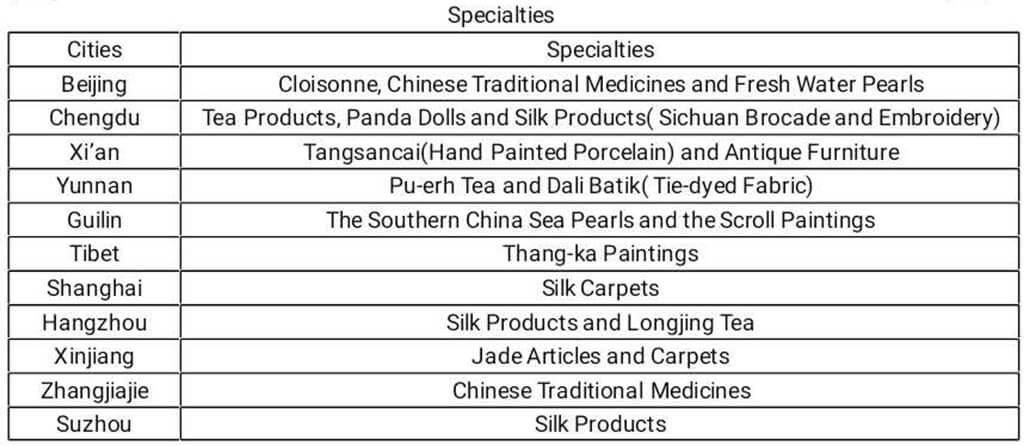
Tipping
It has become a norm in China that tourists tip their guides, drivers and hotel bellboys, if their good services are recognized by the tourists. Of course, the tourists don’t have to. But tipping has become a standard part of tourism culture in China, even though it may not be the same in their home county. It is the best way that the tourists recognize the services offered by the guides and drivers. However, your recognition will be greatly appreciated. When you travel in China, you don’t need to leave tips or gratuities in restaurants.
Food and Dining
Drink
Staple Food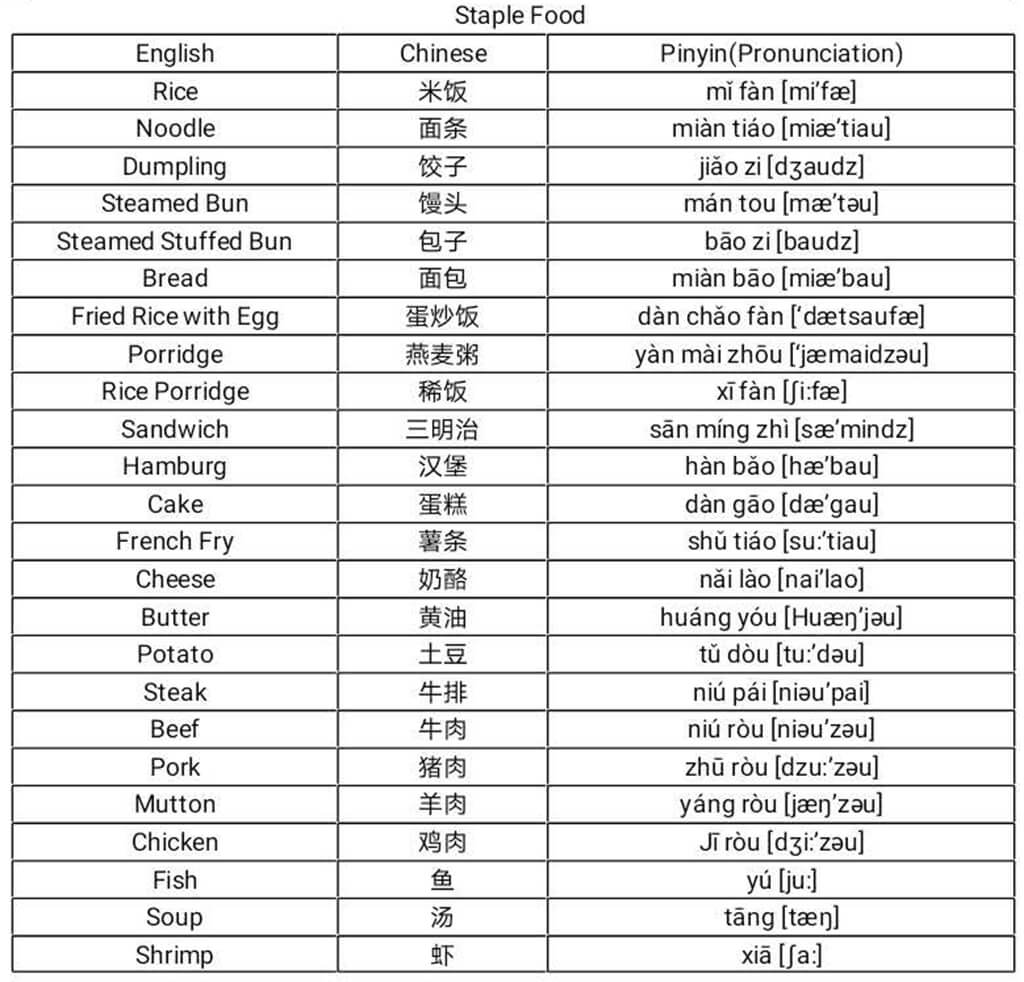
Most Famous Chinese Dishes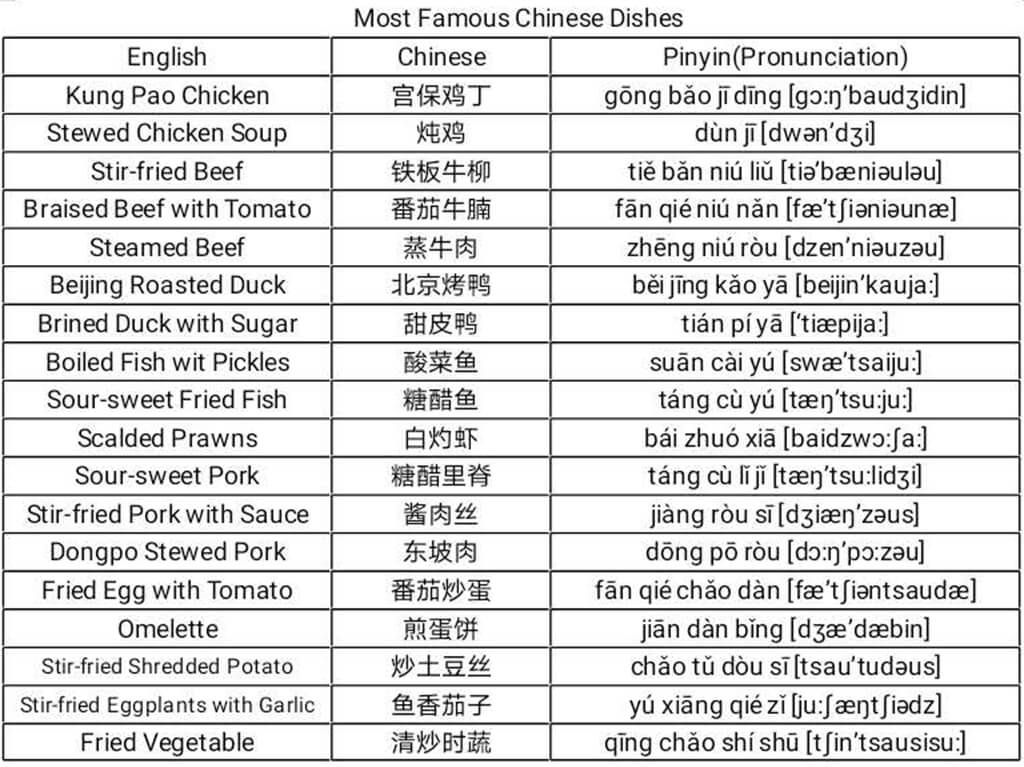
Flavorings and Vegetables
Fruits and Nuts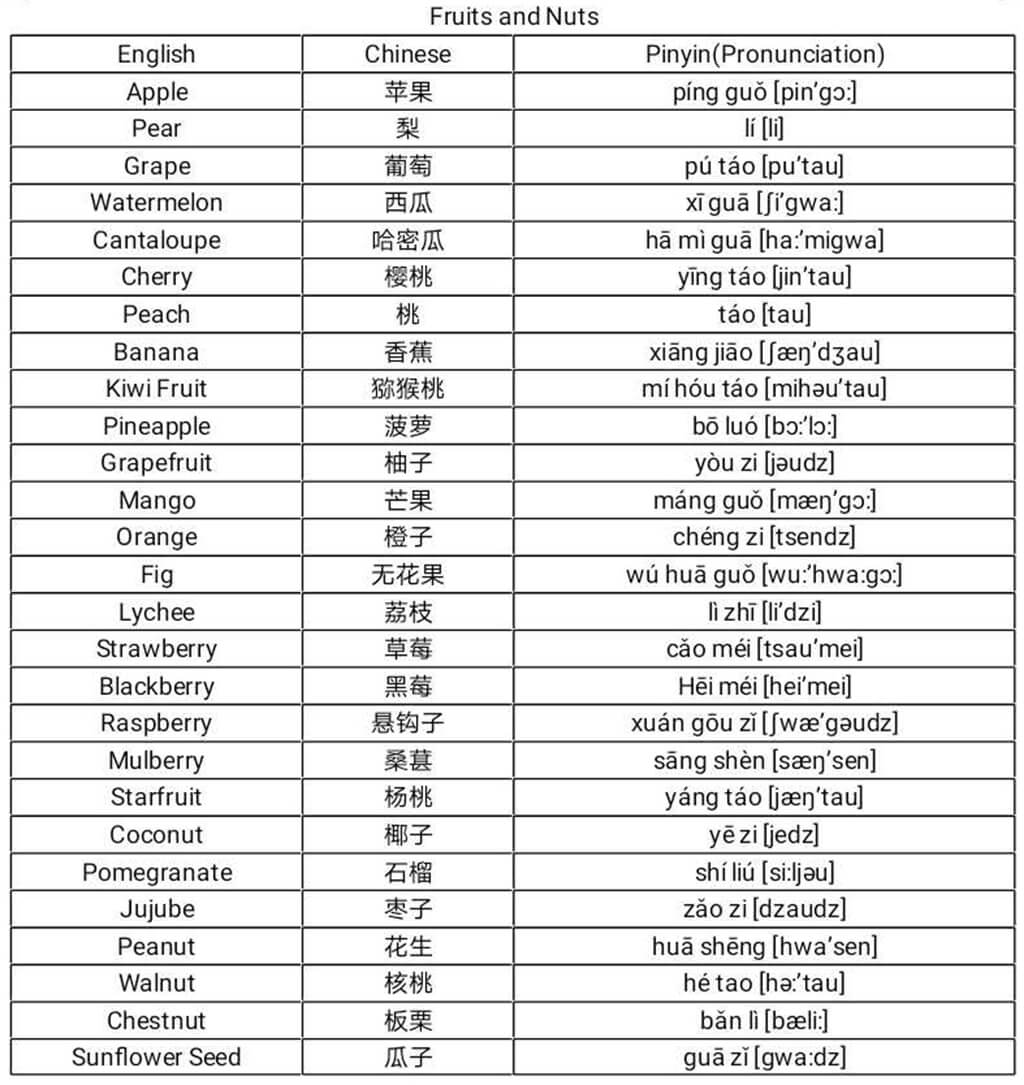
Dinnerware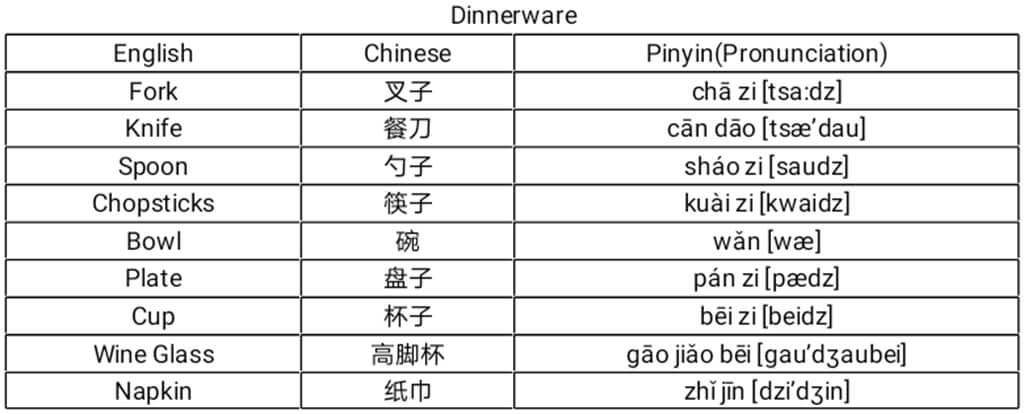
Useful Conversational Chinese
It is impossible that everyone you meet in China Mainland can speak English. The following conversational Chinese might be helpful for you during your stay in China.
Many Chinese words are pronounced the same, but the tones are different. People speak Chinese with four tones, namely the Steady Tone, the Rising Tone, the V Tone (or the Falling and Rising Tone), and the Falling Tone. Check the below:
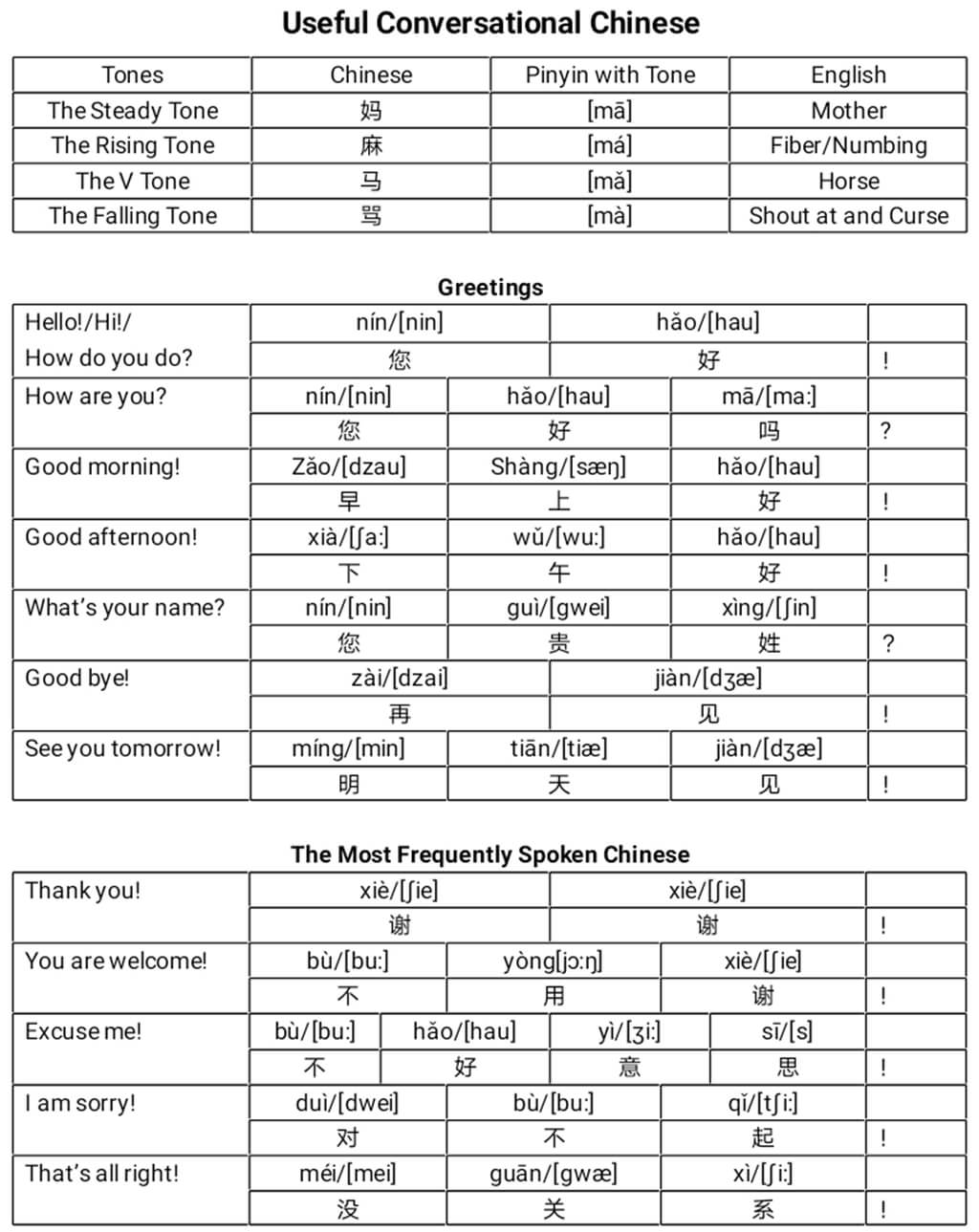 | 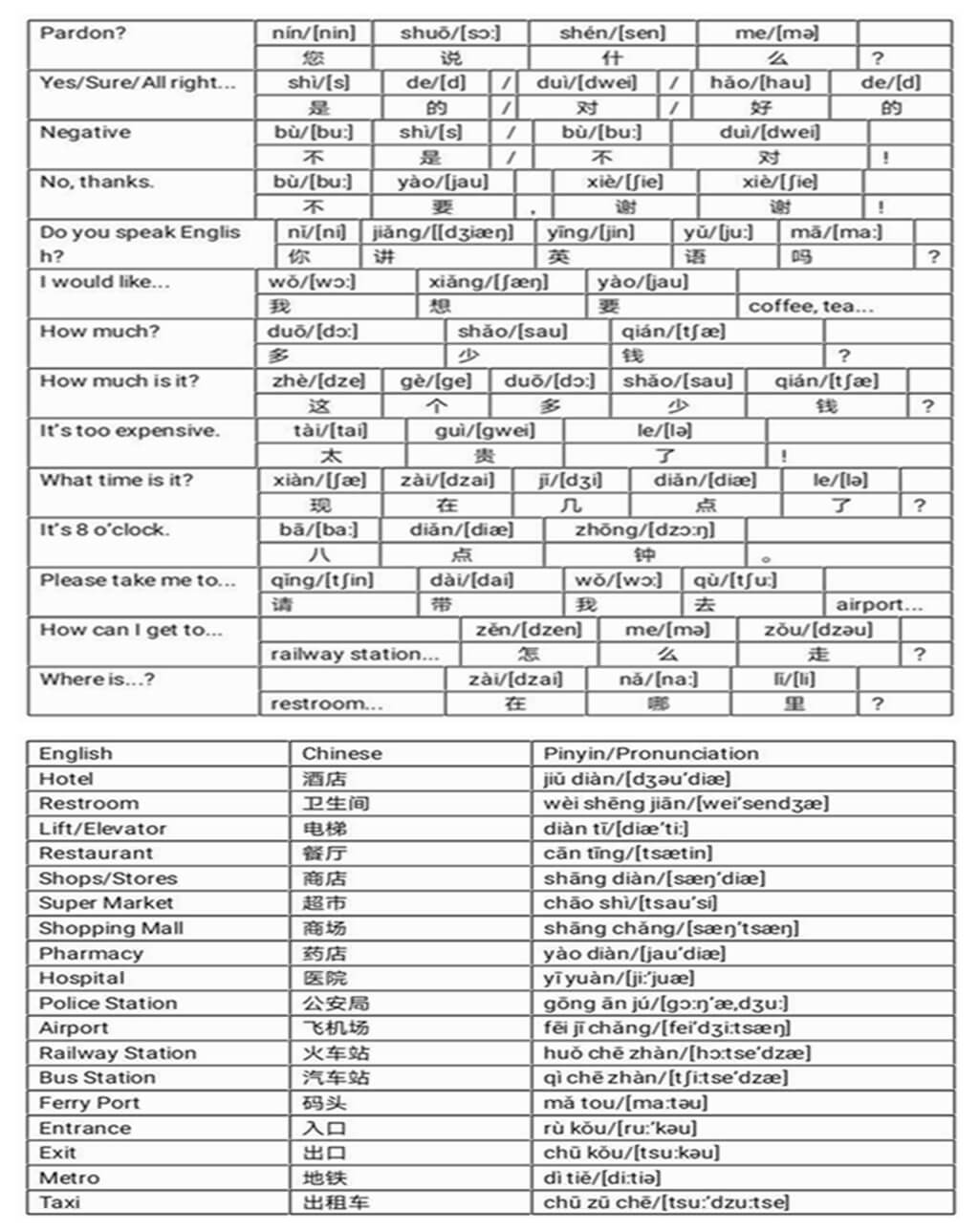 |
Related Articles:
A Summary of China's History
Chengdu Travel Guide
Author: Tina Luo
Update:
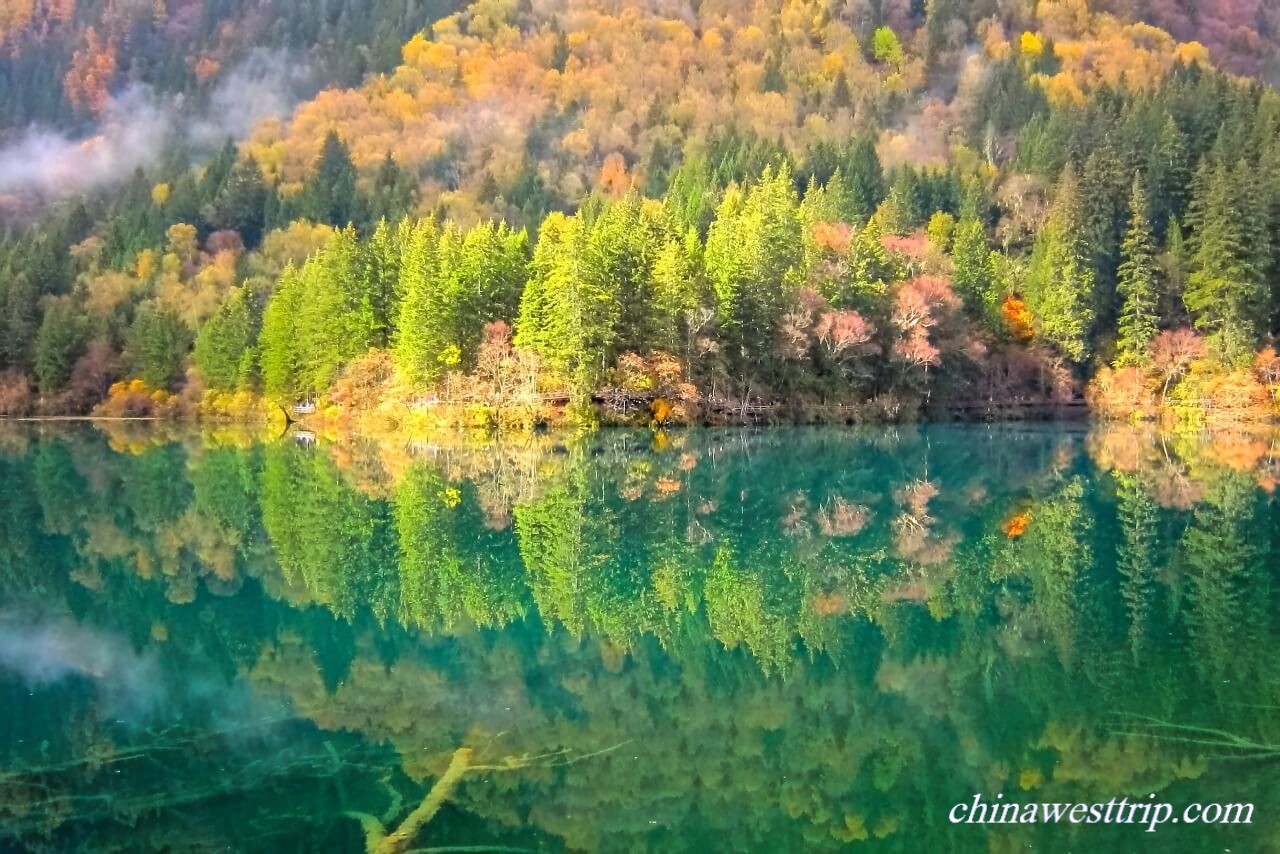 Jiuzhaigou Valley
Jiuzhaigou Valley